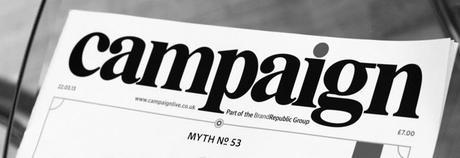Many people today think their website says it all. They will brand online, they will sell online, and they will rely on clients to sign in and post comments. But in reality this is lazy thinking, because you have to get your clients to the website first, and with all the competition out there, don't expect them to stumble on your precious site by accident.

Forbes magazine says it is easy to understand why so many businesses have migrated their advertising efforts to the web. It is cost effective, has limitless exposure potential and is very convenient - for everyone. But print, the leading American business and marketing magazine maintains, still has a primary stance as a "powerful and necessary component of an ad campaign".
First off, there is tangibility. A decade ago everyone was talking about e-books, e-news and the death of publishing - and it was rubbish. All those who lamented you couldn't take your Kindle in the bath were right, and though e-books might be great for travel, they haven't replaced the touch of paper you can feel, smell, underline and take notes on. "A print piece is a physical thing," continues Forbes. "Magazines and newspapers can stay in houses or offices for months or years, while Internet ads can disappear into cyber space instantaneously".
Print is PermanentPrint also brings credibility, a sense of legitimacy and permanence. Websites are so often dependent on pop-ups, banner ads and links, and when the web-weary reader searches for reliable information she must be ever alert for that trigger-finger moment when she clicks the wrong thing. It never happens with print. You see something that attracts you in a brochure, but want to check the details later when you're more alert. Then it's time for the website, and not before.
Print ads can also work better to establish your brand identity. Clients are more likely to remember an image in print, because their eye stays longer on the page- websites are often scanned in as little as 15 seconds. Fonts, colours and types of images hold together more consistently for a total impact, undistracted by anything moving, flickering or blinking on the screen.
Mike, brand expert at Print-Print.co.uk Booklet Printing says the best way to market your business is to utilize as many channels as possible to reach every corner of your target demographic, but not to forget that print is key. "So many businesses today rely almost entirely on the internet for advertising," he says, "that now printed materials speak of something rare and rather more classy. People will always go to your website to take real business a step further, but something brilliant they can hold in their hand will sink in a lot deeper".
Keep it Simple and RelevantAll good advertising follows one rule, and that is to keep things clear and user-friendly. Titles, product names and websites alike must be memorable and as short as possible, as well as easy to spell. Images, too, must be carefully chosen and powerful. Don't mix teddy-bear t-shirts with the ultra-punk unless you've got a very narrow niche - most people would be scared of running into x-rated or devilish details when they want to cruise for kiddy clothes. But if you are selling enticing blends of goods, people will still know they are safe with print.


